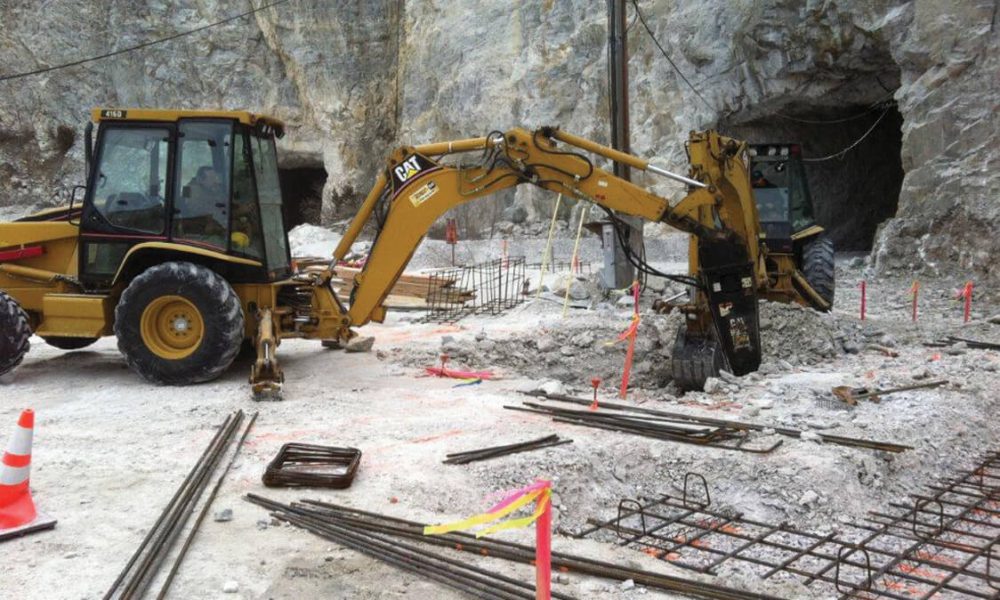Introducing the Art of Excavation: Pro Tips for Safe and Effective Excavating
As soil is transformed and earth is moved, the complexities of excavation expose themselves, demanding a keen understanding of equipment, dirt structure, safety and security procedures, and ecological considerations. The expertise required to browse these elements successfully can indicate the difference between a successful excavation project and a potential calamity.
Value of Appropriate Devices
To make certain the security and performance of any type of excavation task, making use of the appropriate devices is vital. Excavation jobs differ in range and intricacy, varying from little household landscape design tasks to large-scale building and construction endeavors.
These flexible devices come in numerous sizes to fit different project needs. Miniature excavators are excellent for smaller sized jobs, while bigger excavators take on extra substantial projects efficiently.
Besides excavators, various other crucial tools includes dump trenchers, vehicles, and excavators. Dispose trucks are necessary for eliminating and transferring excavated products, while plates are used for excavating deep and slim trenches. Bulldozers succeed in jobs that require pushing large amounts of soil or particles. By buying the ideal equipment, excavation projects can be finished safely, promptly, and with precision.
Comprehending Soil Structure
A thorough understanding of soil composition is fundamental for performing excavation projects with accuracy and safety and security. Comprehending the different sorts of soil is essential as it directly impacts excavation techniques, equipment choice, and general job performance. Dirt composition usually is composed of four main elements: sand, silt, clay, and natural matter. Each part has special buildings that influence how soil responds to excavation processes.
Silt particles are smaller sized than sand but bigger than clay, using modest water drainage and communication. Organic issue, such as decomposing plant material, affects soil fertility and stability.
Before beginning excavation, conducting dirt tests to identify its structure and features is vital. This info helps in picking the suitable tools, carrying out safety procedures, and creating excavation techniques tailored to the specific dirt conditions - excavating ohio. By recognizing dirt structure, excavation professionals can improve task results while guaranteeing safety and security and adherence to finest methods
Security Measures and Protocols
Recognizing soil structure is the cornerstone whereupon precaution and procedures for excavation jobs are developed, guaranteeing the health of workers and the success of the endeavor. There are a number of key procedures that have to be applied to mitigate risks and prevent mishaps. when it comes to security throughout excavation.
First and leading, before any excavating commences, an extensive examination of the website must be carried out to determine any possible hazards such as underground energies, unsteady dirt conditions, or nearby structures that might pose a danger. It is important to have a skilled individual oversee the excavation procedure to make certain that all safety and security protocols are followed purely.
Moreover, all employees entailed in the excavation has to be effectively trained in safe digging techniques and the correct procedure of tools. By sticking to these security actions and procedures, excavation projects can be finished efficiently and without occurrence.
Effective Excavation Planning
When embarking on an excavation job, thorough planning is necessary to make certain performance, safety and security, and successful outcomes. Effective excavation preparation involves numerous essential actions that are crucial for the smooth execution of the task.
As soon as the website analysis is total, the next visit this site right here step is to develop a clear timeline and schedule for the excavation activities. This includes figuring out the series of tasks, tools needs, and manpower allotment. Correct scheduling assists avoid delays and guarantees that the job stays on track.

Moreover, communication amongst all group members is vital throughout the planning phase. Clear instructions, normal updates, and effective coordination are vital for a successful excavation task. By spending effort and time in thorough planning, excavation teams can dramatically enhance productivity, reduce threats, and achieve effective end results.

Handling Environmental Factors To Consider
With increasing focus on environmental sustainability in construction practices, managing ecological considerations has come to be an important element of excavation tasks. Excavation tasks have the potential to influence the surrounding setting with soil disintegration, debris overflow, habitat disturbance, and contamination of water resources. To mitigate these threats, it is vital to apply finest techniques that prioritize environmental management.

Moreover, proper waste administration is crucial to stop soil and water contamination. Implementing treatments for the disposal of harmful products, recycling of waste products, and decreasing the usage of damaging chemicals can substantially minimize the environmental effect of excavation jobs. By incorporating these practices right into excavation planning and implementation, building firms can make sure that their jobs are not only risk-free and effective yet also environmentally liable.
Verdict
Finally, mastering the art of excavation calls for a thorough understanding of proper tools, dirt composition, security actions, and reliable preparation. By following these guidelines and considering ecological aspects, excavations can be performed securely and efficiently. click here for info It is vital to prioritize safety and security and productivity in every excavating job to make sure effective end results.
As soil is turned and earth is moved, the intricacies of excavation expose themselves, requiring a keen understanding of devices, dirt make-up, safety procedures, and ecological factors to consider.To ensure the safety and performance of any type of excavation task, using the proper devices is critical.A detailed grasp of dirt structure is fundamental for executing excavation tasks with accuracy and safety and security. Recognizing the different kinds of dirt is essential as it straight impacts excavation methods, tools choice, and total task effectiveness. By understanding soil make-up, excavation experts can improve job results while ensuring security and adherence to finest techniques.